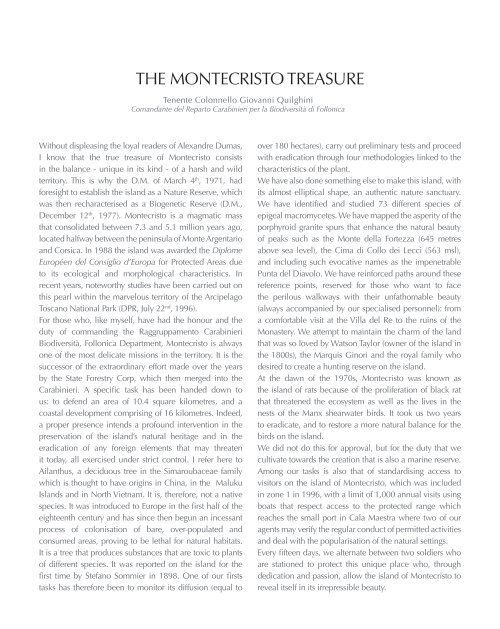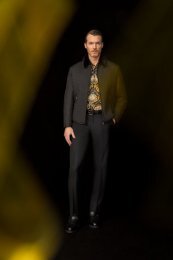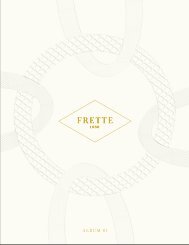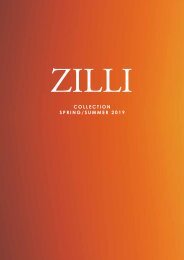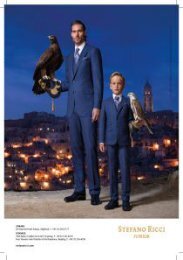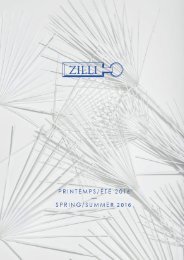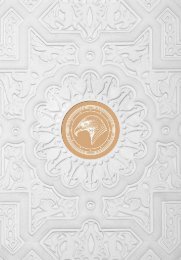You also want an ePaper? Increase the reach of your titles
YUMPU automatically turns print PDFs into web optimized ePapers that Google loves.
THE MONTECRISTO TREASURE<br />
Tenente Colonnello Giovanni Quilghini<br />
Comandante del Reparto Carabinieri per la Biodiversità di Follonica<br />
Without displeasing the loyal readers of Alexandre Dumas,<br />
I know that the true treasure of Montecristo consists<br />
in the balance - unique in its kind - of a harsh and wild<br />
territory. This is why the D.M. of March 4 th , 1971, had<br />
foresight to establish the island as a Nature Reserve, which<br />
was then recharacterised as a Biogenetic Reserve (D.M.,<br />
December 12 th , 1977). Montecristo is a magmatic mass<br />
that consolidated between 7.3 and 5.1 million years ago,<br />
located halfway between the peninsula of Monte Argentario<br />
and Corsica. In 1988 the island was awarded the Diplome<br />
Européen del Consiglio d’Europa for Protected Areas due<br />
to its ecological and morphological characteristics. In<br />
recent years, noteworthy studies have been carried out on<br />
this pearl within the marvelous territory of the Arcipelago<br />
Toscano National Park (DPR, July 22 nd , 1996).<br />
For those who, like myself, have had the honour and the<br />
duty of commanding the Raggruppamento Carabinieri<br />
Biodiversità, Follonica Department, Montecristo is always<br />
one of the most delicate missions in the territory. It is the<br />
successor of the extraordinary effort made over the years<br />
by the State Forestry Corp, which then merged into the<br />
Carabinieri. A specific task has been handed down to<br />
us: to defend an area of 10.4 square kilometres, and a<br />
coastal development comprising of 16 kilometres. Indeed,<br />
a proper presence intends a profound intervention in the<br />
preservation of the island’s natural heritage and in the<br />
eradication of any foreign elements that may threaten<br />
it today, all exercised under strict control. I refer here to<br />
Ailanthus, a deciduous tree in the Simaroubaceae family<br />
which is thought to have origins in China, in the Maluku<br />
Islands and in North Vietnam. It is, therefore, not a native<br />
species. It was introduced to Europe in the first half of the<br />
eighteenth century and has since then begun an incessant<br />
process of colonisation of bare, over-populated and<br />
consumed areas, proving to be lethal for natural habitats.<br />
It is a tree that produces substances that are toxic to plants<br />
of different species. It was reported on the island for the<br />
first time by Stefano Sommier in 1898. One of our firsts<br />
tasks has therefore been to monitor its diffusion (equal to<br />
over 180 hectares), carry out preliminary tests and proceed<br />
with eradication through four methodologies linked to the<br />
characteristics of the plant.<br />
We have also done something else to make this island, with<br />
its almost elliptical shape, an authentic nature sanctuary.<br />
We have identified and studied 73 different species of<br />
epigeal macromycetes. We have mapped the asperity of the<br />
porphyroid granite spurs that enhance the natural beauty<br />
of peaks such as the Monte della Fortezza (645 metres<br />
above sea level), the Cima di Collo dei Lecci (563 msl),<br />
and including such evocative names as the impenetrable<br />
Punta del Diavolo. We have reinforced paths around these<br />
reference points, reserved for those who want to face<br />
the perilous walkways with their unfathomable beauty<br />
(always accompanied by our specialised personnel): from<br />
a comfortable visit at the Villa del Re to the ruins of the<br />
Monastery. We attempt to maintain the charm of the land<br />
that was so loved by Watson Taylor (owner of the island in<br />
the 1800s), the Marquis Ginori and the royal family who<br />
desired to create a hunting reserve on the island.<br />
At the dawn of the 1970s, Montecristo was known as<br />
the island of rats because of the proliferation of black rat<br />
that threatened the ecosystem as well as the lives in the<br />
nests of the Manx shearwater birds. It took us two years<br />
to eradicate, and to restore a more natural balance for the<br />
birds on the island.<br />
We did not do this for approval, but for the duty that we<br />
cultivate towards the creation that is also a marine reserve.<br />
Among our tasks is also that of standardising access to<br />
visitors on the island of Montecristo, which was included<br />
in zone 1 in 1996, with a limit of 1,000 annual visits using<br />
boats that respect access to the protected range which<br />
reaches the small port in Cala Maestra where two of our<br />
agents may verify the regular conduct of permitted activities<br />
and deal with the popularisation of the natural settings.<br />
Every fifteen days, we alternate between two soldiers who<br />
are stationed to protect this unique place who, through<br />
dedication and passion, allow the island of Montecristo to<br />
reveal itself in its irrepressible beauty.


